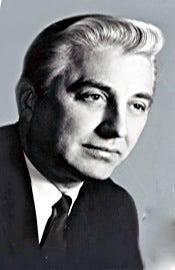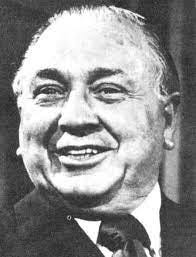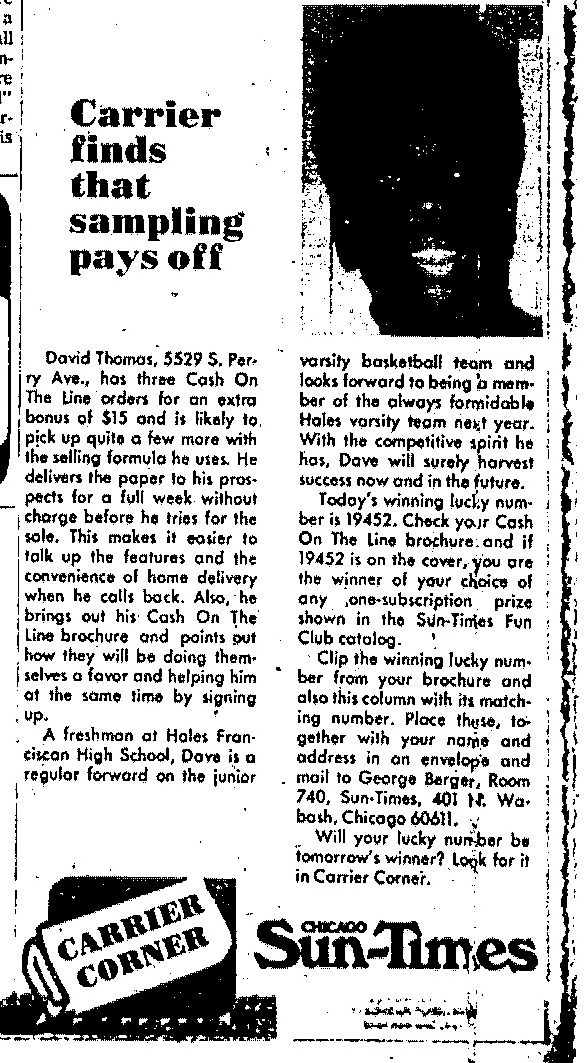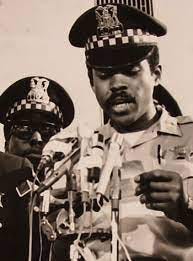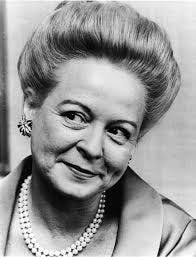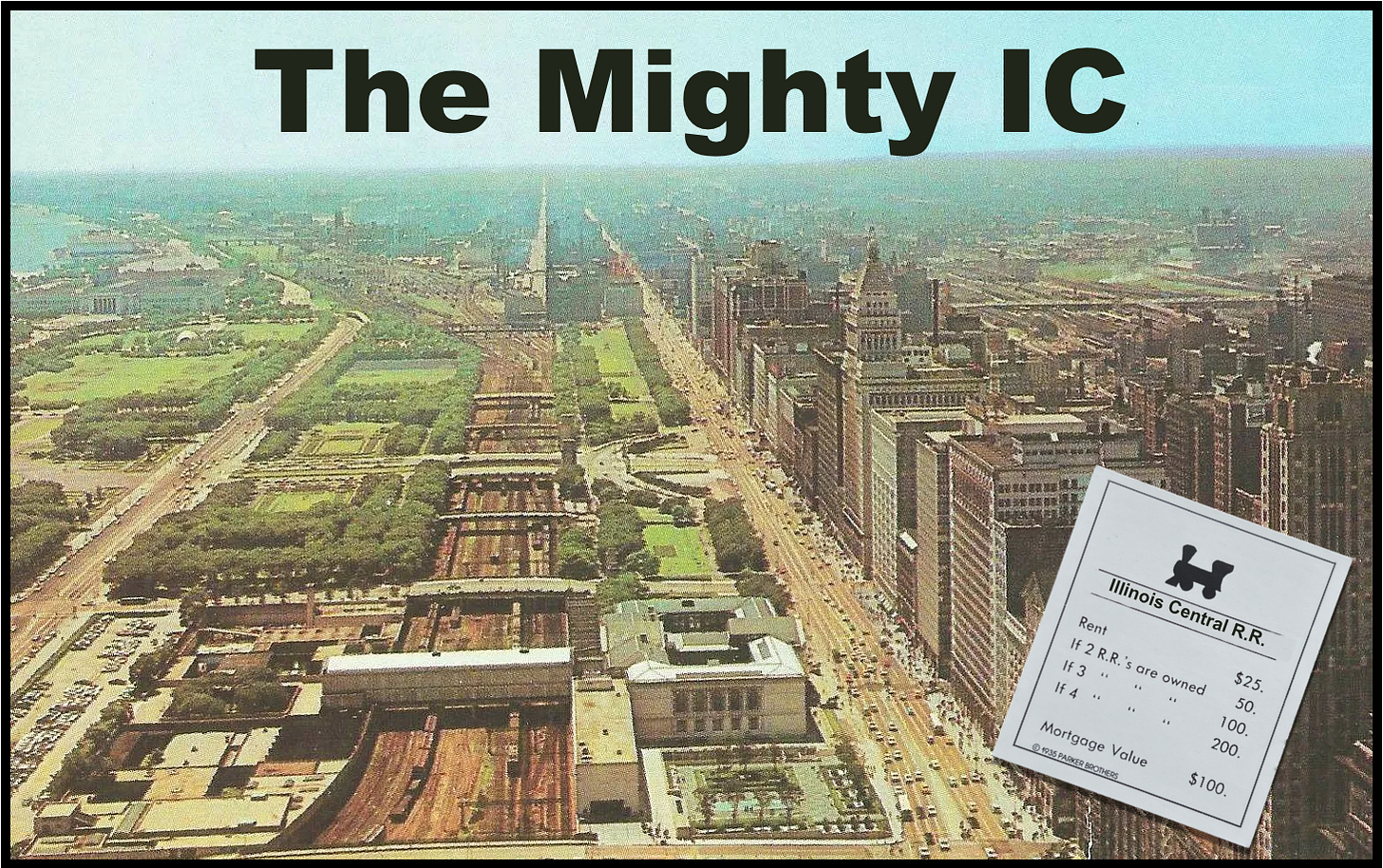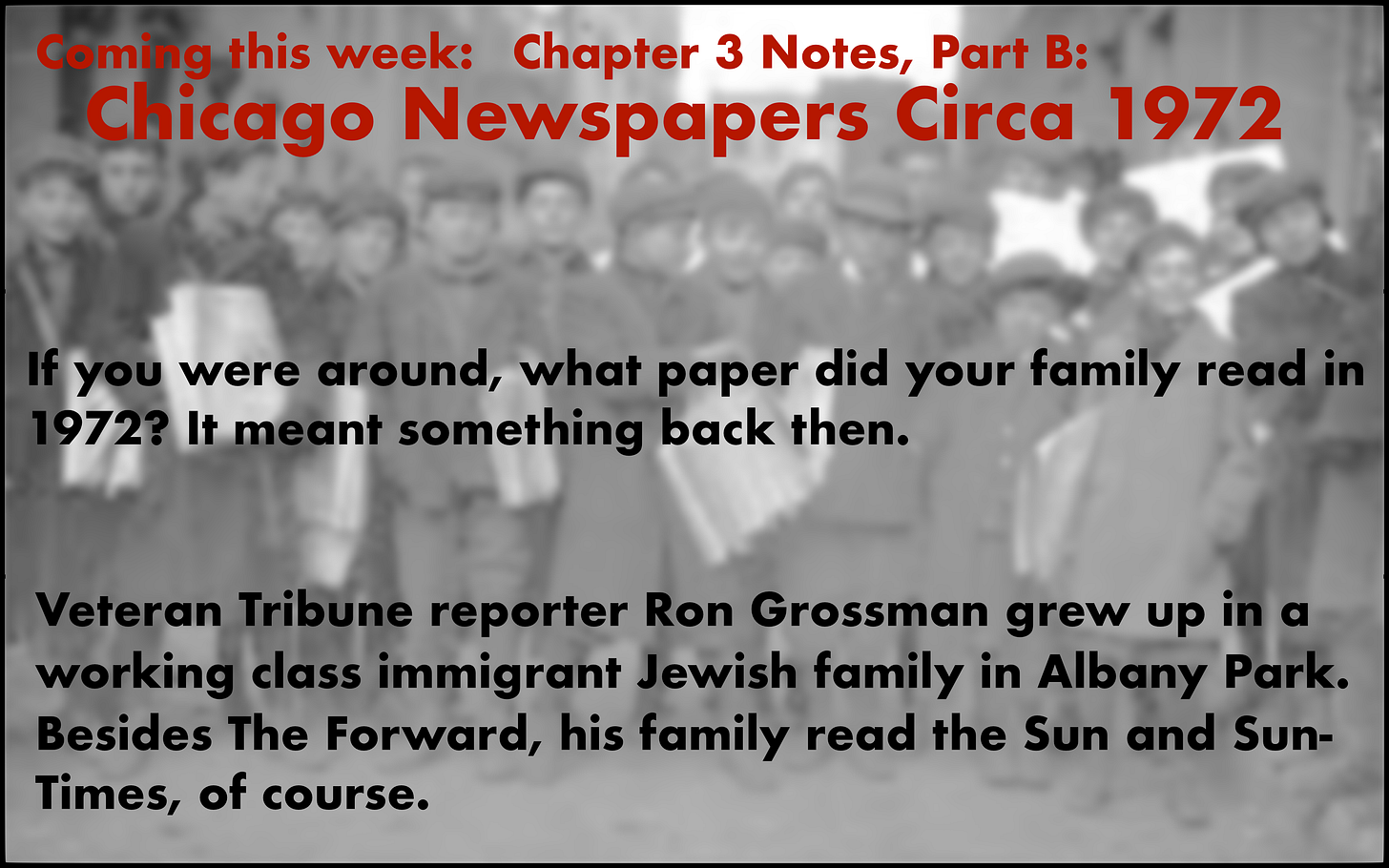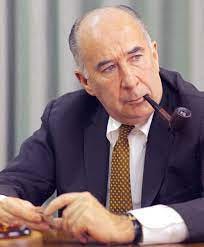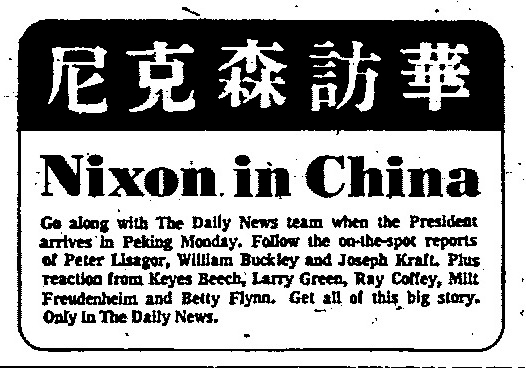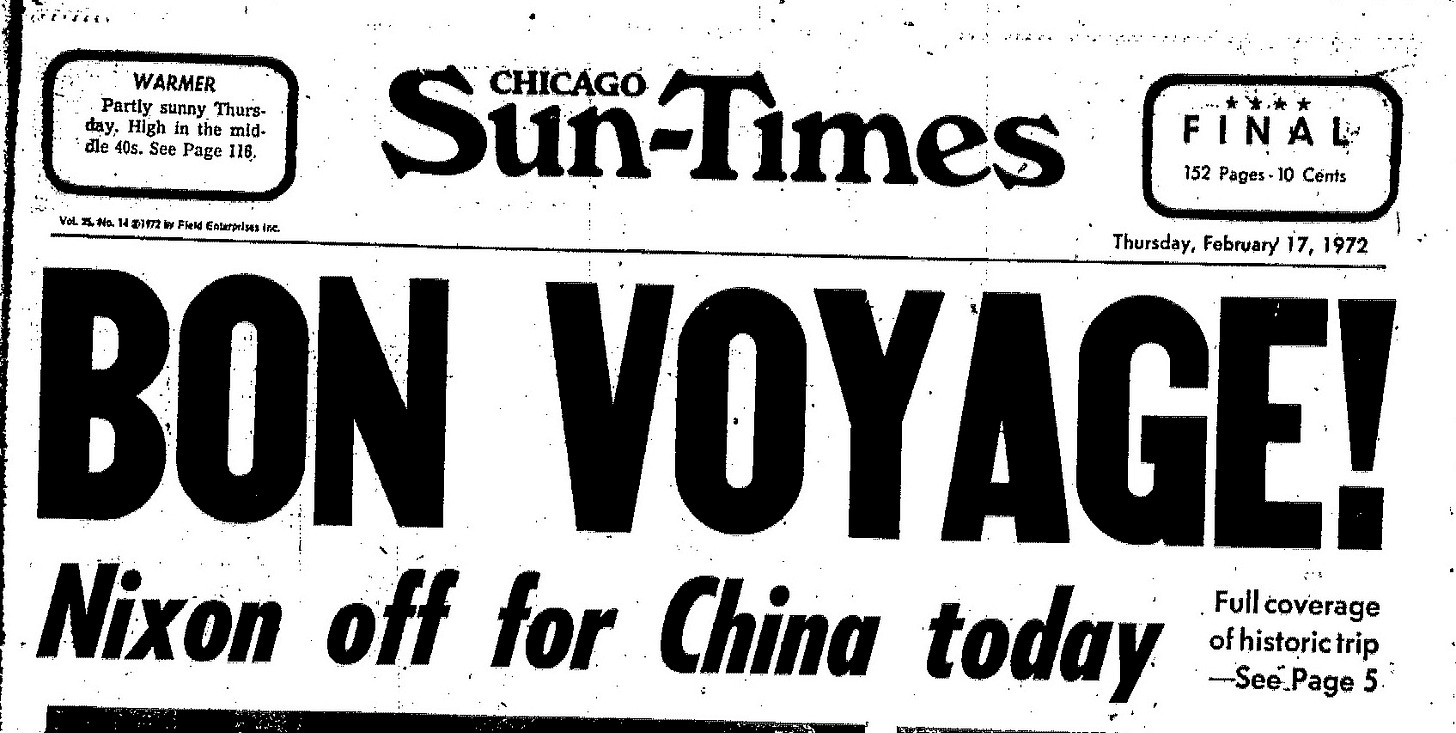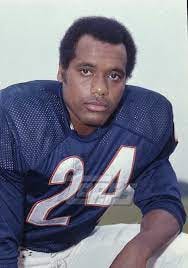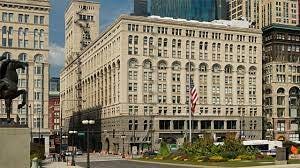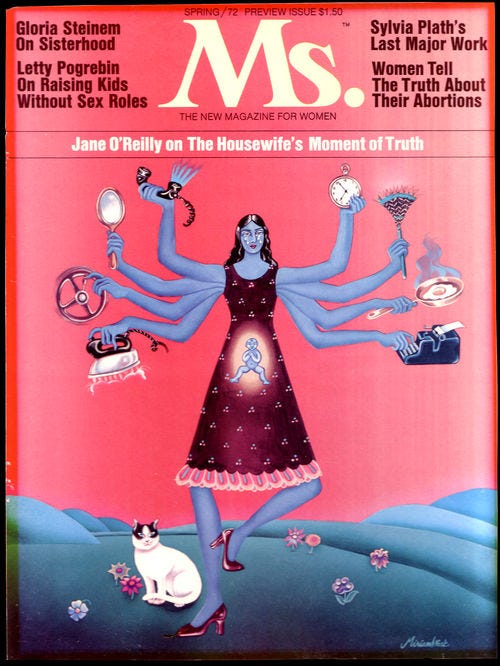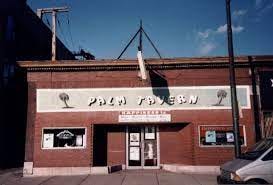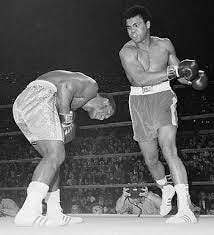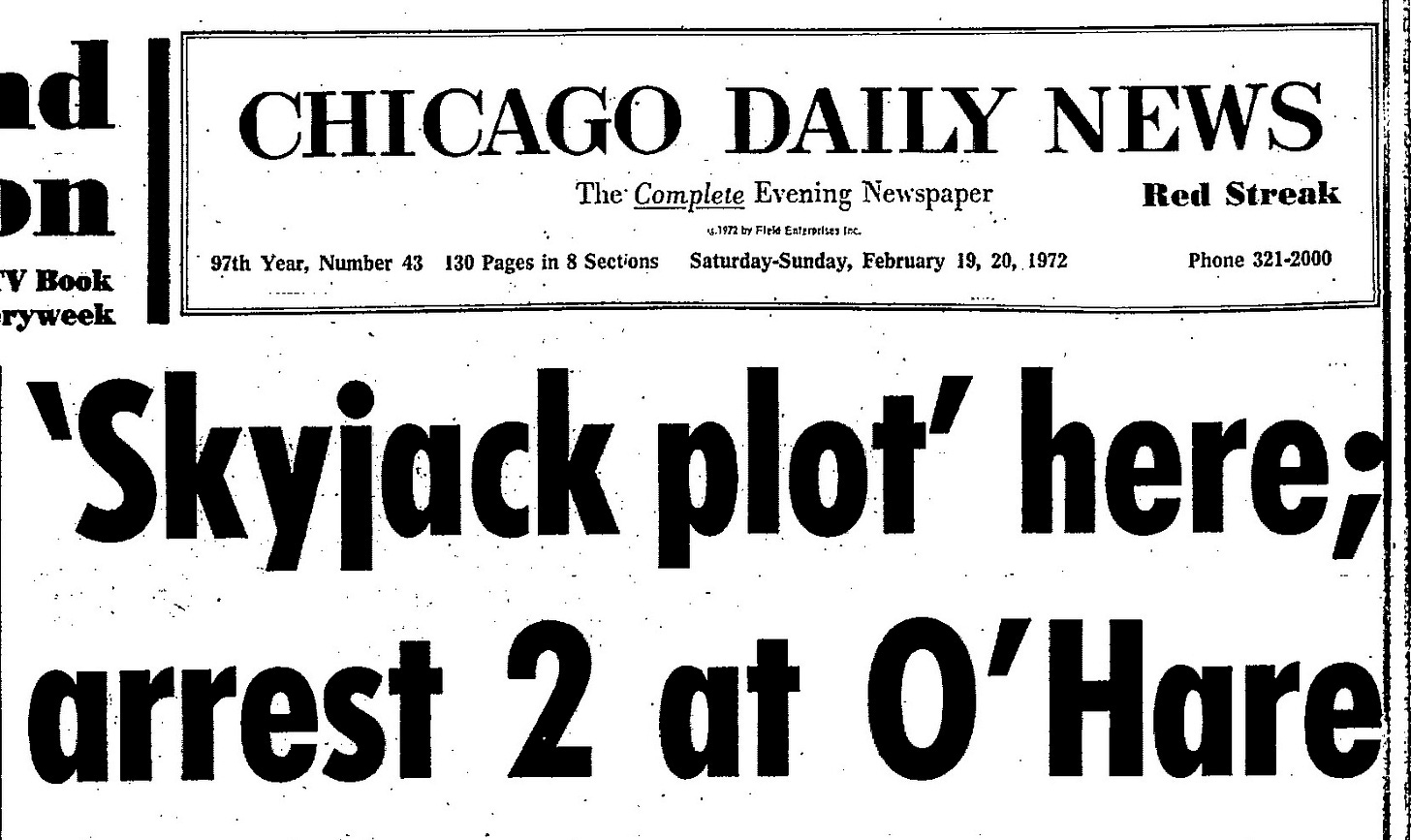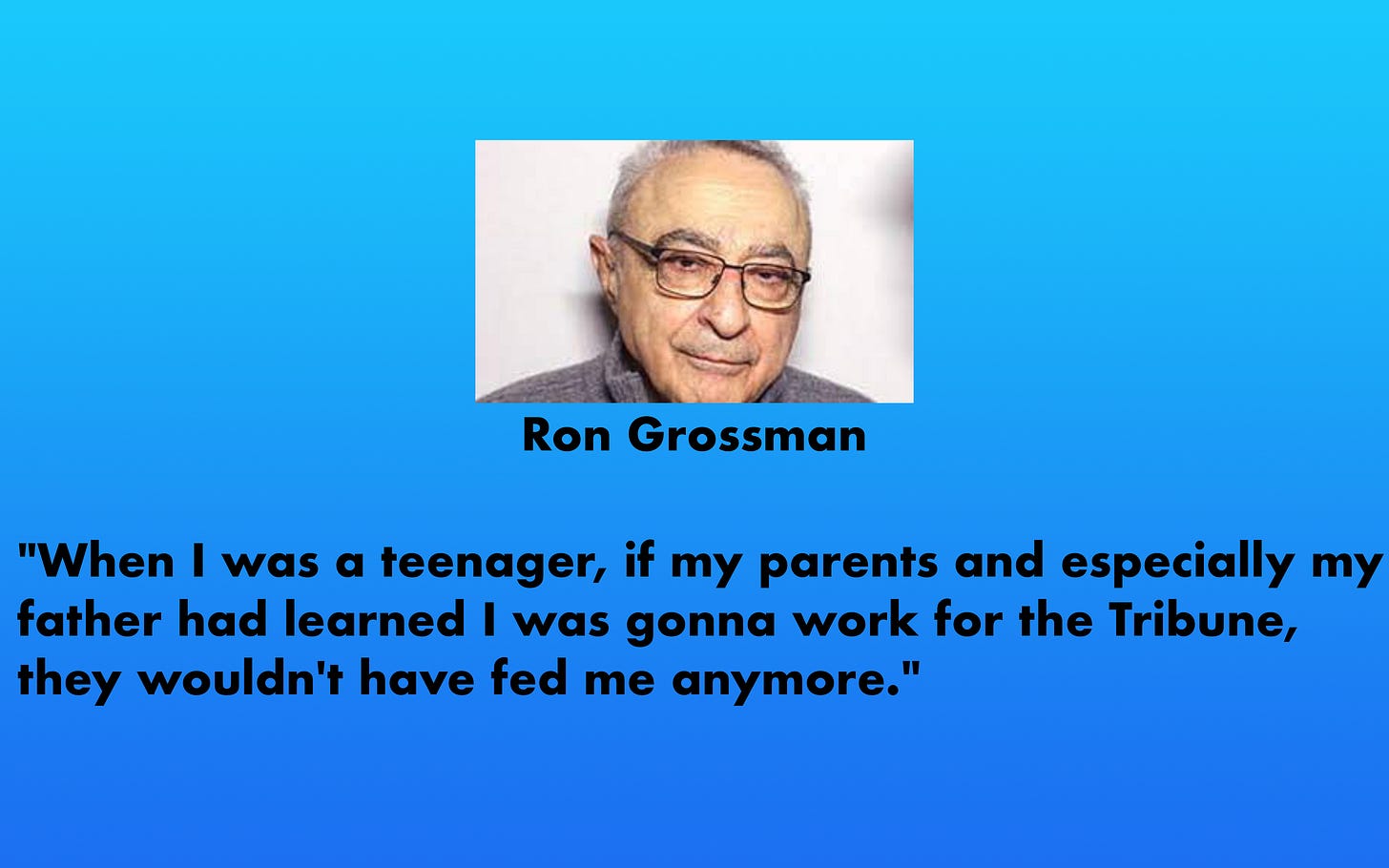THIS CRAZY DAY IN 1972: John Mitchell ends the Mafia as an early bicentennial gift to America
Weekly Compilation February 14-20, 1972
To access all site contents, click HERE.
Why do we run this separate item peeking into newspapers from 1972? Because 1972 was part of the ancient times when everybody read a paper. Everybody, everybody, everybody. Even kids. So Steve Bertolucci, the 10-year-old hero of the novel serialized at this Substack, read the paper too—sometimes just to have something to do. These are some of the stories he read. If you’d like, keep up with the 1972 papers every day on Twitter, @RoselandChi1972.
February 14, 1972
Chicago Sun-Times: Pucinksi blasts British as Irish cheer
By Michael Miner
Here comes some election-year math, and a raucous Irish meeting.
1972 will be the worst year for “The Troubles” in Northern Ireland, with almost 500 killed and 5,000 injured. January 30 was Bloody Sunday.
U.S. Rep. Roman Pucinski is running for the U.S. Senate.
1 + 2 = (PANDERING TO IRISH VOTERS)
“There was standing room only--and little at that--as Rep. Roman C. Pucinski (D-Ill) denounced the British Sunday before a cheering audience of Irish,” writes Michael Miner, who would go on to join the still young Chicago Reader and spend decades there as a columnist and media critic.
Pucinski spoke to about 600 people at “a meeting of the Irish Northern Aid Committee at the Mont Clare Lanes, 2957 N. Harlem.” He blasted a recent statement by Secretary of State William Rogers that the U.S. was “not in a position to intervene” in the British-Irish crisis following Bloody Sunday.
Rogers said the U.S. would consider “a useful role” if both the British and Irish asked.
Pucinski’s interpretation: “You are here to give living proof that Sec. Rogers is dramatically wrong when he says there is no American interest in the tragedy of Northern Ireland…[I]t is the first time the American government has failed to respond to an act of genocide.”
And: “This is a barbaric last attempt by the British to hold on to the last of their colonies….We are seeing the systematic extermination of Irish Catholics in Northern Ireland.”
Miner gets in some great prose to finish: “The final speaker was the Rev. Edward O’Reilly Cassidy, a large gray-haired priest whose oratory made the waves turn white off County Kerry, fog fall over Dublin and the green fields run red with Nationalist blood.”
I checked with Miner on what else he might remember about the meeting. He remembered “annoyance that it got trimmed at such an exasperating point. Surely I quoted the reverend.” Alas, Rev. Cassidy’s rousing words are lost to us, because that’s how print newspapers worked—the editors were filling up a very specific amount of physical space, and when a story got too long, it got lopped off wherever the space stopped.
“Bloody Sunday” is big news in heavily Irish Chicago. Two weeks ago, 10,000 Irish marched peacefully but illegally in Derry against the British government’s internment policy, which imprisoned suspected IRA members without trial. There were over 700 internees at that time.
After some protesters threw rocks at British soldiers, the soldiers opened fire killing 14 and injuring 13. A 2010 British government report finally ruled the soldiers fired first, and without sufficient provocation. The prime minister apologized and offered compensation to relatives, almost 40 years later.
Mayor Daley called the soldiers "storm troopers". Daley co-chairs the Chicago Irish Relief Fund, and he’s announced that the Fund will send a total of $75,000 to the Catholic primate of Ireland to help victims "without regard to political or religious affiliation.” That’s $506,250 in 2022 money.
According to the Tribune, “Daley’s ‘storm trooper’ statement…created a minor furor in London, and resulted in reporters asking him to repeat the charge”. So Daley repeated it, adding, “The sham of the British occupation has now been revealed to the world. Hundreds of Irishmen have been left to rot in jail without charge or bail, victims of every conceivable form of indignity.”
BTW, Mont Clare Lanes, where Pucinski spoke to a raucous Irish meeting, closed in 2015 after 56 years serving what was, earlier in the 20th century, an insatiable American appetite for bowling. An account in the Tribune by David Pollard says it was “a family-run business, which has 32 lanes for bowling, a bar and two banquet rooms”. As one of the owners said, “In the ‘50s and ‘60s, this place rocked.”
Mont Clare Lanes is in Chicago, but across the street is Elmwood Park. The owners blamed their closing in part on Chicago’s high taxes. Across the street, they felt, they might have had “a fighting chance.”
Here’s Mont Clare lanes, before…
…and after.
February 14, 1972
Chicago Sun-Times: Carrier Corner
“Carrier finds that sampling pays off”
The Sun-Times and Daily News (both owned by Field Enterprises) run little spots about their paperboys, called “carriers” in these items. These “Carrier Corner” items are highly instructive.
Today’s Sun-Times carrier is David Thomas of 5529 S. Perry Ave. Newspapers of this time period give the exact street address of everybody, even a young kid who delivers newspapers. It’s like the newspapers think we won’t believe someone exists without an address.
As you’ll see, the Sun-Times is running a contest called “Cash On The Line” in which they put numbers on the cover of “Cash On The Line” brochures, announce a winning number, and hand out prizes to anyone who has the brochure with that number. It’s unclear if the brochures are distributed only by the paperboys, or by other means too. The brochures are for selling subscriptions.
“David Thomas…has three Cash On The Line orders for an extra bonus of $15 and is likely to pick up quite a few more with the selling formula he uses,” reads today’s Carrier Corner. “He delivers the paper to his prospects for a full week without charge before he tries for the sale. This makes it easier to talk up the features and the convenience of home delivery when he calls back.
“A freshman at Hales Franciscan High School, Dave is regular forward on the junior varsity basketball team and looks forward to being a member of the always formidable Hales varsity team next year. With the competitive spirit he has, Dave will surely harvest success now and in the future.
“Today’s winning lucky number is 19452. Check your Cash On The Line brochure and if 19452 is on the cover, you are the winner of your choice of any one-subscription prize shown in the Sun-Times Fun Club catalog.”
I was a paper carrier myself, and remember that it meant not just delivering the papers in the dark pre-dawn hours to people’s front porches, but also collecting from all the customers once a month. These Sun-Times and Daily News paperboys are also expected to drum up new customers. Wow.
February 14, 1972
Chicago Daily Defender: U.S. investigates Cop killing of Westsider
“The Justice Department has entered the investigation of the death of Louis Redmond, 21, who was fatally shot by two Chicago patrolmen last week, the Daily Defender was informed yesterday.”
“Renault Robinson, executive director [of the Afro-American Patrolmen’s League], informed the Daily Defender that his office had sent a letter requesting a formal investigation late last week and the request was granted.”
Redmond was shot nine times last Saturday night by two Shakespeare District police at the corner of Chicago and Drake. “Shakespeare District police said Redmond was being questioned about ‘a series of crime patterns in the Westside area’ when he was shot by patrolmen Fred Muscarella and Carl Veller”.
“Investigators said that Redmond was told to take his hand out of his pocket, and when did he was holding a .25 caliber pistol which he reportedly fired once, piercing Veller’s coat.
“Witnesses, however, told the Daily Defender that Veller took off his jacket following the shooting and fired one shot through it with a pistol. Muscarella was also a reported classmate of Redmond long before he joined the force….Witnesses who knew both Muscarella and Redmond stated that there had been a longstanding feud between the two stemming from their high school days.”
Robinson said he took the case to the Justice Department rather than the State’s Attorney because “we can’t get satisfaction from Ed Hanrahan….Hanrahan’s office has shown a great reluctance about prosecuting a white officer who has killed a black man or youth.”
Renault Robinson, who founded the Afro-American Patrolmen’s League, was a Chicago policeman for almost 20 years when he was appointed as chair of the Chicago Housing Authority by Mayor Harold Washington. You can read a biography of Robinson and view interviews at his page on The History Makers.
February 15, 1972
Chicago Daily News: Atty. Gen. Mitchell quits
By William J. Eaton
Chicago Daily News: Martha sobs, ‘It’s a bad move’
(UPI)
These are two separate front page stories:
1) The attorney general quits.
2) His wife cries about it.
Such is the 1972 press fascination with Martha Mitchell. Her picture is on the front page of the Daily News today, not her husband’s.
Back to the ostensible main story: Mitchell quit to manage President Nixon’s re-election campaign. He ran Nixon’s 1968 campaign.
“Mr. Nixon said he would nominate Deputy Atty. Gen. Richard G. Kleindienst to succeed Mitchell.”
Nixon accepts Mitchell’s resignation “with regret,” but writes, “You have given the American people new--and fully justified--confidence in their ability to halt the spiral of crime and to restore domestic peace.”
The Daily News’ William J. Eaton writes that Mitchell’s tenure “was flawed by the Senate’s defeat of two Supreme Court nominees he recommended to the President. There was also widespread criticism of Mitchell’s assertion that he had the right to order electronic surveillance of anyone he felt was a threat to national security.”
Meanwhile, in Front Page Story #2, “between sobs,” Martha Mitchell said “I think it is a very bad move….I feel he was better in the Justice Department than he would be in the Citizens for Nixon….I feel Mr. Nixon doesn’t need anyone. He will be re-elected on his own.”
“She said she passed on her views to Mr. Nixon indirectly and got the same response as from her husband--that Mitchell was needed in the campaign. ‘It just breaks my heart,’ she sobbed. ‘It just breaks my heart.’”
February 15, 1972
Chicago Daily News: Irving’s wife held for Swiss
Daily News Wire Services
Somebody’s finally about to get arrested over the crazy hoax Howard Hughes autobiography that novelist Clifford Irving claimed he wrote with Hughes.
This is the book that drove the #1 eccentric billionaire of the 20th century to emerge from 15 years of seclusion to repudiate it. It’s also the book that claims, among other things, that Hughes is so bonkers he’s let his finger and toe nails grow to the length of 9 inches. (See the January 10 post on the Hughes press conference HERE.)
Publisher McGraw-Hill backed the book until it discovered the checks it wrote to Hughes were deposited in a Swiss bank by a “H. Hughes”—who turned out to be a woman named “Helga Hughes.” Helga Hughes’ passport had the same number as Clifford Irving’s wife.
Today, a U.S. Magistrate issued a warrant on behalf of the Swiss government to arrest Mrs. Irving, and a “Swiss diplomatic courier arrived with a formal request for extradition of Edith Irving, 36…to face prosecution on fraud and forgery charges.”
Meanwhile, “Danish cabaret singer Nina von Pallandt told a federal grand jury that Irving had never met Hughes ‘in my presence.’” Irving had claimed he interviewed Hughes while carrying on an affair with Pallandt in Mexico, but she’s told everybody who would listen (and now the grand jury) that he was never out of her sight long enough to meet with Hughes.
“The blond beauty, estranged wife of a Dutch baron, followed another of the women in Irving’s life” in testifying before the grand jury. “Florida scuba diver Anne Baxter” wouldn’t say what she testified. Baxter and Irving had a tryst in St. Croix.
February 15, 1972: The Mighty IC, Stalling
Chicago Daily News
February 15, 1972
Chicago Sun-Times: Public defender aide arrested in shakedown plot
By Art Petacque
Chicago Daily News: Getty ‘mystified’ by extortion plot
By Edmund J. Rooney
A top aide in Cook County Public Defender Gerald Getty’s office makes the front pages for allegedly shaking him down for $20,000. Getty gets the entire front page in the Sun-Times, and a headline above the masthead in the Daily News.
“Carolyn Jaffe, 29, chief assistant in charge of the juvenile division‘s office, was arrested last Thursday and charged with theft by threat, a felony,” writes Art Petacque in the Sun-Times. Jaffe and Gerald Hartsman were charged with threatening to spread “damaging stories” about Getty and his family.
Hartsman was an interviewer in the public defender’s office. “Getty fired him last August after he reportedly loafed on the job and did not show up for work.”
“Getty co-operated with state’s attorney’s police in trapping the suspects. It was learned that Getty reportedly gave the pair $500 in marked money to ‘show his good faith’ in the matter.” Jaffe and Hartsman were arrested in Juvenile Court, 2240 W. Roosevelt, where Getty “had arranged to pay the $500 with police observing.”
“Getty has earned a national reputation for his work as a public defender,” writes Petacque. “He was a lawyer who defended convicted murderer Richard Speck.”
In the Daily News, Edmund J. Rooney writes that Getty “has told friends he is ‘mystified’ over why he became the target of an alleged $20,000 extortion plot….‘I and all members of my family are completely innocent in this,’ Getty told close friends.”
February 15, 1972
Chicago Sun-Times: Boyle assumes control over public defenders
By Thomas J. Dolan
Circuit Court Judge John Boyle took “control of hiring, firing, and paying” the Cook County public defender's staff.
Perhaps it's a complete coincidence that simultaneously, Cook County public defender Gerald Getty just helped state’s attorney police arrest a top aide for shaking him down for $20,000.
The Sun-Times and “NBC-TV news commentator Walter Jacobson” got the letter Boyle sent to Getty requiring his staff to file employment applications with Boyle’s office in 15 days. (Did you forget Walter Jacobson was with Channel 5 for a while?)
“Benjamin S. Mackoff, administrative director to Boyle, said the letter was sent following disclosures that a member of Getty’s staff was ‘double-dipping’ (drawing two public salaries) as a trustee for the Sanitary District.”
“Mackoff said after the arrangement, involving Chester P. Majewski, came to light ‘Judge Boyle checked and found that practices in the (Getty) office left much to be desired.’”
February 16, 1972
Chicago Daily News: Fatal school shooting sets off dispute on gun
By Diane Monk
Vietnam veteran Cornelius Fitzpatrick was shot inside Kenwood High School on Tuesday by Bernard Martin, a security guard who’s an off-duty cop. Everything after that is in dispute.
Meanwhile, covered in the last paragraphs of this article, two 15-year-olds are charged with shooting and killing a student monitor at Calumet High School on Tuesday. “The victim, Raymond Williams, 18, of 8735 S. Racine, was shot once in the chest during a fight with two teenagers.”
At Kenwood, security guard/cop Martin “said that Fitzpatrick drew a pistol on him during a scuffle in the hall and that he then shot Fitzpatrick. Wentworth Av. Homicide unit investigators said a .22-caliber automatic pistol was taken from the dead youth’s hand.”
“Police also said they had eyewitnesses--‘school personnel’--who saw Fitzpatrick with a gun.”
But a Kenwood senior told the Daily News she saw the scuffle, and “If he had a gun, I didn’t see it.”
“Mrs. Roxie Fitzpatrick, the slain youth’s mother, said her son lived at home with her and her husband, Charles, a janitor for the Board of Education. ‘He never had a gun,’ said Mrs. Fitzpatrick, who has been employed by the R.R. Donnelly & Co. for the past 27 years.”
“Mrs. Fitzpatrick said her son served in the Marines in Vietnam and was discharged about a year ago. He currently was in his second semester at the Olive-Harvey branch of the Chicago City Colleges, she said.”
February 16, 1972
Chicago Sun-Times: U.S. report on Chicago
‘Head knocked off syndicate’
By Morton Kondracke
The U.S. Justice Department says “the ‘head has been knocked off’ the Chicago crime syndicate through conviction of top mobsters”.
Assistant Attorney General Henry Peterson says Attorney General John Mitchell (who just resigned to head Nixon’s re-election campaign) set the goal of wiping out the Mafia by 1976 as a bicentennial gift to the nation.
“Peterson said that as a result of more personnel and use of wiretaps, 196 high-echelon members of the syndicate have been indicted in the last two years and 85 convicted.”
“Asked at a press conference whether Chicago was a ‘bright spot’ for him, Peterson laughed and replied, ‘I do not generally regard Chicago as a bright spot, but we have been very effective there, yes….I do think that the head has been knocked off because of the succession of leadership figures who have been convicted.”
Kondracke writes that means Sam Giancana (1965), Sam Battaglia (1967), Jackie Cerone (1970) and since deceased Phil Alderisio (1970). Wiretaps, officials say, made the difference. The Johnson administration didn’t allow wiretaps, and Nixon changed that.
February 16, 1972
Chicago Daily News: Five Getty kin on public pay
By Phillip J. O’Connor
Yesterday, we learned Cook County Public Defender Gerald Getty allegedly got shook down for $20,000 by top aide Carolyn Jaffe and her boyfriend, who threatened to spread damaging stories about Getty and his family.
Today, it turns out three Getty relatives work for his office making annual salaries totaling $59,376. That’s $400,000 in 2022 money. Two more Getty relatives used to work for him, but have since moved on to other government payrolls. “Getty denied his influence got the two their present jobs.”
The three still working for Getty are his daughter, who started as a secretary and became an investigator; his stepson, an investigator; and his daughter-in-law’s brother, an assistant public defender. The two who moved on are his son and his son-in-law.
Getty talks and makes it worse for himself. Isn’t this guy a lawyer? Anyway he needs one to tell him to shut up:
“There isn’t any secret about it. Other public officials have put relatives on their payrolls. These three are on my payroll because they are competent people. It is difficult to obtain competent people at the salaries they set up for me.”
And here’s a figurative palindrome: “I’ve constantly tried to get more money for my employees.”
“My daughter is drawing an investigator’s salary because she is the administrator over the typing pool in my office. I’m only permitted to pay secretaries $515 a month and I can’t keep competent secretaries at that salary. They keep leaving for other jobs.” Getty’s secretaries are making $41,715 per year in 2022 money.
February 17, 1972
February 16, 1972
Chicago Daily News: Ch 2 News Bob McBride full page ad
Channel 2’s nutty ad campaign promoting new anchorman Bob McBride continues.
It feels like these ads are losing their way. “These days, TV 2 News is truly something to behold. It’s quick, it’s bright, it’s pleasant to watch. It gives you all the hard facts. But without the hard edge. Two-fisted, yet warm.”
Hm. This sounds like Ch 2 is trying to pave a middle road between Ch 5’s Floyd Kalber—”the hard facts”—and Ch 7’s Happy Talk team led by Fahey Flynn— “without the hard edge”. In so doing, they’re trying to define a flabby medium, and they’re doing it badly. I mean— “pleasant to watch”? “Two-fisted, yet warm”?
Ch 5 will run its own full-page ad tomorrow, and Ch 7 ran ads last week. Let’s take a look in the next item.
February 17, 1972
Chicago Daily News: Ch 5 news Floyd Kalber ad
I doubt that Ch 5’s ad today, or Ch 7’s ad last week, are meant to counter the crazed Ch 2 ad campaign for Bob McBride. No; the Ch 7 and Ch 5 ads directly address each other, like there is no Bob McBride or Ch 2 at all. Let’s see these ads side-by-side to appreciate the radically different marketing.
Ch 7 cheekily makes fun of Floyd Kalber in its ad, though it passive-aggressively doesn’t name him.
Ch 5’s ad reads like a big middle finger to Ch 7.
Older readers will remember that Ch 7 was known for its “happy talk” approach, and its ad wisely reflects that sensibility.
First, Ch 7’s ad from last week:
So Ch 7 opens with a goofy cartoon, with the punchline in its headline. The message is that many TV news shows “with their old-fashioned formats and stiff, stuffy reporters, seem to do a better job of delivering you off to dreamland than delivering you the news.”
Ch 7 promises not to put you to sleep like those “stiff, stuffy anchors.” Ch 7 then shows us not just its star anchor Fahey Flynn but the whole (all male of course) news crew—smiling, happy and excited to bring you the news.
Ch 5, one week later, runs this ad today for Floyd Kalber:
That stern look from Floyd Kalber gets across Ch 5’s message quite clearly all by itself. It’s the picture to accompany the dictionary definition of a dirty look.
Then there’s the ad copy, which all but shouts “Fuck you Fahey Flynn”:
Floyd feels as strongly about Chicago as you do.
There's a lot he likes about what goes on here. There's a lot he doesn't like.
But he won't tell you how he feels on the air. All he'll tell you is what goes on.
Clearly.
Completely.
Objectively.
Isn't that exactly what a newsman is supposed to do?
Ouch!
February 17, 1972
Daily News: Tots hungry, neglected in home--cook
By Betty Washington
Six children died on Feb. 1 in a predawn fire at their day care located in an illegally converted basement apartment at 6023 S. Aberdeen. Mike Royko wrote about the case while the news was breaking on February 2 in “A license to kill kids?”
Today employee Darlene Jones testified at a special state hearing that the children at the day care were so hungry, they tried to steal canned goods from the pantry. Owner Mrs. Lillian Jones (no relation to Darlene) then took all the food to her second-floor apartment.
Lillian Jones was licensed to care for eight children on the second floor, but there were ten children, and they were in the illegal basement apartment.
Darlene Jones testified: “For supper the last six months, all they were having for dinner was navy beans. I cooked the navy beans myself. Sometimes when I would get my (welfare) check, I would buy hamburger.”
The morning of the fire, Darlene Jones testified she woke up to see the fire “already had started drifting into the back room I shared with Tony (Anthony Arrington, 5). I looked out at the kids and they were in bed. Then I looked around the side of the doorway into the kitchen and could see the fire from the floor to the ceilings. I was in kind of a state of shock.”
“Darlene said she started to go after the other kids, but grabbed Tony and went upstairs to seek help. ‘I just made it away from the smoke and caught my breath. I was still holding Tony,’ she said. ‘Ron (Ron Cook, 8) followed me out.’”
….”Her voice weakened as she told of seeing one child lying in a top bunk ‘looking at me’ as the fire spread through the apartment. ‘Of course, he was just a baby. He didn’t know what to do.’”
Lillian Jones refused to testify.
February 17, 1972: The Mighty IC, ICC hearing #2
Chicago Daily News
Last month, two spokesmen for the Illinois Central appeared at an Illinois Commerce Commission hearing looking into the IC’s dismal recent service record—18 serious delays in the last four months of 1971 alone.
At that hearing, one IC official blamed Commonwealth Edison for failing to supply enough power from its substations—but admitted that the IC’s new double-decker cars are bigger than the old ones, and use more electricity. The other IC official admitted that lack of electricity was only a problem in six of the 18 delays.
The ICC hearing officer adjourned until February for more investigating. At the February meeting, the hearing officer talks to Commonwealth Edison. Commonwealth Edison blames the IC.
Chicago Tribune
This time, the Tribune has more information than the Daily News:
The Commonwealth Edison representative says the 30 new double-decker IC cars introduced so draw more electricity when they’re started, causing circuit breakers to short. But Edison has modified the circuit breakers to handle the bigger surge, and they should be done installing new relay systems by the end of the month.
If you missed it, catch up on IC history—and how the IC is integral to Chicago history—here.
February 17, 1972
Chicago Sun-Times: City Beat - Electronics seen as key to averting skyjackings
By Charles M. Smith
Benjamin O. Davis, a retired general “re-enlisted into the war against skyjacking,” talks about the new FAA skyjacker screening rules.
“The success of skyjackers will disappear eventually, but the threat they pose will linger on” is Davis’ overall message. “It’s not foolproof,” he said of the new screening process, “It’s 95 per cent foolproof.”
“The 5 per cent margin helped seven of the last nine skyjackers, he indicated. They never would have boarded planes had their kinky behavior caught the eye of airport personnel.”
“The other two skyjackers forced their way onto planes at gunpoint, and so were not included in the reckoning, he said. Screening, he stressed, just removes the skyjacker, it doesn’t remove his kinkiness.”

February 17, 1972
Chicago Daily News: Paternity suit won by Dick Gordon
By Dave Canfield
Do you wonder how they determined paternity lawsuits before DNA? Hopefully, this is not the usual way.
Bears star Dick Gordon was “accused by Miss Zully Ferguson, 21, of 1560 N. Sandburg Terr., of being the father of her 8-month-old son, Sadat. Gordon denied the charge during testimony in the four-day trial. He admitted having sexual relations with Miss Ferguson but not after Aug. 1, 1970, ten months before the child was born.”
“Don Shy, a teammate of Gordon’s, testified that he had sexual relations with the model in September, 1970, when she was living in New Orleans, and Shy was playing for the New Orleans Saints.”
Judge Vincent W. Tondryk ruled Gordon wasn’t the father.
“Rufus Cook, attorney for Miss Ferguson, said he would ask for a new trial. Judge Tondryk gave no reason for his ruling.”
February 17, 1972
Tribune: mini’pinions
By Jeannye Thornton
Back in the day, every paper at some point ran this type of item--a reporter stops people on the street to ask opinions, and snaps a picture. Before “mini-pinions,” the Trib ran “Inquiring Camera Girl”.
I love these things. Talk about the perfect way to take the pulse of the times.
In “The Honeymooners” episode “Head of the Household,” Ralph and Norton run into Dick Prescott, “the Questioning Photographer” on their way to work. Norton says he reads the column every night. He tells Dick Prescott he loved the question the other day, and says it must have been controversial. “The H-Bomb?” Prescott asks. Norton says no--which is more authentic, the Canarsie or the Weehawken style of mambo?
Prescott tells Norton that today’s question is, “In your house, who is the boss, you or your wife?” Norton says he’s the boss--any man afraid of his wife is not a man. “Don’t quote me because if my wife reads that, she’ll kill me.”
Now Ralph swaggers past Norton and says HE would have answered: “I’m the one who gives the orders. I’m the one who makes all the decisions. On the day we were married, I said two things: One, ‘I do’---two, ‘I’m the boss.’”
Dick Prescott: “Mr. Kramden, I’m going to print what you just said, OK?”
Pretty sure you can fill in the rest.
Here’s a sample Inquiring Camera Girl from December 6, 1944, asking Andy Frain ushers: “What would-be gate-crasher will you never forget?”
Theodore Johnson, 604 N. Laramie: “During the Republican convention a man in a business suit came in carrying a piece of ice on his shoulder and wanted to get thru as the ice man. We knew he wasn’t an ice man because of his dress. He made another mistake, too. He came in the wrong gate to deliver ice.”
Here is Mr. Johnson’s house at 604 N. Laramie today:
Now for today’s mini’pinions.
Reporter Jeannye Thornton asks random Chicagoans, Should all passengers be frisked before being allowed to board aircraft?
Recall, the FAA just last week put rules into effect requiring airlines to pick one of four possible ways to thwart skyjackers. One way is simply observing passengers to see if they fit an FAA skyjacker profile. Last year, there were 25 U.S. skyjackings. 1972 will see 28. You do the math.
Thornton runs three opinions for frisking, three against. Unfortunately, the photo quality in the Trib’s archives are not always good. Here’s the against opinions:
“Juan Lewis, Morgan Park: That’s rather personal for someone to be frisking you. Of course with all the incidents there should be some security measures, but not frisking. How far can you go? Should we all gather together and take off our clothes before boarding?”
“James Thomas, Lakeview: It would be an infringement on the rights of passengers’ freedom of travel; so I don’t think so. It would be an invasion of privacy, and I don’t think it would stop hijacking. Electronic equipment would be better than a personal search, but I don’t think airlines would be willing to install the equipment as it is costly.”
Miss Mary McKiernan, Hegewisch: Frisking would be another invasion of privacy. The best approach for filtering out hijackers, I think, would be to use the X-ray machines or detectors for metal. I am definitely against personal frisking of passengers.
February 17, 1972
Chicago Sun-Times: Landmarks group moves up voting on main library
By Rob Cuscaden
Sun-Times Architecture critic
It’s astonishing how much Chicago history is up for grabs every time the Landmarks Commission meets in 1972.
First, Commission chairman Samuel Lichtmann moves up considering the central library at Randolph & Michigan for landmark status to the Commission’s next meeting on March 6--though Lichtmann still puts a damper on any expectations. He tells the crowd of pro-library spectators, “it must be understood that this commission can only recommend landmark designation, and only the City Council can grant the official designation.”
Meanwhile, the Commission voted unanimously to landmark Louis Sullivan’s last building, the 1922 Krause Music Store at 4611 N. Lincoln--
--and George Maher’s 1906 Magerstadt House at 4930 S. Greenwood. Maher is a significant Prairie architect who early on worked with Frank Lloyd Wright when they were both draftsmen in another company.
The Commission also heard a report on establishing the Prairie Avenue historic district, “that would re-create to some extent the flavor and architecture of the late 19th Century. The Glessner, Kimball and Ames homes are there, as is the Keith House…It is hoped that the Widow Clarke House, at 4526 S. Wabash, and already an official landmark, could be re-erected on Prairie Av.”
Moving the Clarke house would cost about $300,000. Buying the Kimball and Ames homes would run $250,000, and Keith $90,000. Multiply all of those numbers by $6.75 to get the current 2022 values.
City Council will vote on the Stock Yards gate landmarking on Feb 24--but it’s sitting on the Monadnock, McClurg and Reliance buildings.
The Commission will consider the Auditorium on April 13, and the Charnley and Madiener homes in May.
February 17, 1972
Chicago Sun-Times: Gloria, in person
Gloria Steinem comes to town and speaks “to an overflow crowd in the Crystal Ballroom of the Sheraton-Blackstone.”
“’For years, we’ve been identified as women with outgroups. We have finally figured out we are second-class citizens, too,’ said Miss Steinem, editor of Ms. Magazine.”
“‘Now we’re joining together with a coalition of outgroups and maybe it will mean that never again will we be forced to serve in a servile position because of visual differences--that means race and sex.’”
February 17, 1972
Chicago Daily Defender Editorial: The Redmond Killing
“The inquiry by the Justice Department into the death of 21-year-old Louis Redmond, is one more evidence of the patent indifference of local police officials in tragedies in which black citizens are involved. Redmond was shot by two Shakespeare District patrolmen, according to witnesses who saw the shooting.
“Redmond, it is said, was being questioned when he was fatally shot. Whatever may be the circumstances that brought death to this young man, it seems highly improbable, even if he had resisted arrest, that there was sufficient cause for two policemen to shoot one man down, especially when he was unarmed and offered no threat real or potential to the police officers.
“This killing is an unabating continuation of a pattern that lends itself to the rumor that is gaining much currency on the Southside and the Westside, that the police have orders to exterminate as many blacks as possible. This is of course propaganda, but a kind that is being fed almost daily by too frequent instances of unjustifiable killings of black men by white policemen.
“These repeated homicidal acts are building up great hositility that may some day explode into a race riot of uncontrollable proportion. The Redmond case was referred to the Justice Department because the belief prevails that the State’s Attorney’s office would never prosecute a white officer for killing a black man, however overwhelming may be the evidence against the white policeman.”
February 18, 1972
Daily News: 30 groups to protest busing in motorcade on SW Side
By Thomas E. Sellers
“More than 30 organizations plan to form a long motorcade Saturday on the Southwest Side to protest the busing of children to integrate schools.”
“An organizer of the Chicago protest, Louis Keber, said busing foes feel busing will reduce the authority parents have over their children and will destroy the concept of children attending schools in their neighborhood.
“He admitted, however, that he’s actually opposed to busing because he doesn’t want schools integrated in his neighborhood. ‘Call me a racist. Call me a bigot. But don’t call me a hypocrite,’ Keber said.”
February 18, 1972
Chicago Daily news: Bomb threats shut Kenwood High
By Edmund J. Rooney and Diane Monk
Kenwood High School closed today after getting two bomb threats--part of the aftermath of the killing there of Cornelius Fitzpatrick on Tuesday.
Fitzpatrick, a Vietnam veteran and former Marine, was shot by security guard/ off-duty police officer Bernard Martin. Martin said Fitzpatrick scuffled with him and had a gun.
Police said they had employee witnesses who saw the gun, but a Kenwood senior told the Daily News, “If he had a gun, I didn’t see it.”
Students were ordered out of the building. “Meanwhile, a group of parents picketed outside the school to protest the use of armed security guards.”
“The threats coincided with the temporary removal of armed security guards at the school in accordance with a moratorium declared by District 14 School Supt. Donald Blythe.”
Blythe’s moratorium came after an “emotion-charged meeting” on Thursday night “that drew nearly 2,000 persons to the high school at 5015 S. Blackstone” to discuss Fitzpatrick’s fatal shooting.
Police told the Daily News that the state’s attorney’s office has cleared Martin, the security guard/off-duty cop who shot Fitzpatrick. Homicide Lt. Walter Bosko said “witnesses would verify Martin’s report that Fitzpatrick pulled a gun and pointed it at Martin and another security guard”.
“The shooting happened at about 1:45 p.m. and a number of students witnessed all or part of the slaying and the scuffle that preceded it.” Two student witnesses spoke at the school meeting and said they didn’t see a gun.
But “Patrick Allen, an assistant principal at Kenwood, says he will stand on his statement to police that he saw a gun.”
“The clear consensus of the stormy meeting Thursday was that while guards might be needed to help with discipline, guns must go.”
February 19, 1972
Chicago Daily Defender: The Bar Fly
This is hands down the best column logo in town, or maybe ever.
FLY SPECKS: We know a tall gent who’s flipped over Martha, the barmaid over at the Neely Brothers’ Cocktail Lounge, 1249 E. 87th st. She’s a real robust winner, O.D. sez…
….Here’s a riddle Mike Hall gleaned from a smart kid: What’s yellow and always point north? Answer: A magnetized banana….Gerri’s Palm Tavern is having some luscious Sunday brunch items on tap beginning this week. You ought to check it on out. (Bring a toothpick)….
MO SPECKS: Can spring be far behind? Can’t be since we’ve received our invite to attend the 13th annual Bockbierfest Friday, March 10 in the Walnut room of the Bismark hotel. The event is Meister Brau’s crowning glory and will be highlighted by the crowning of Meister Brau’s bock beer queens. Remember, pert Bettye Reynolds was one of ‘em last year….
NOTE: Gerri’s Palm Tavern, now demolished, was a vital part of Chicago and Bronzeville music history. Long-time Sun-Times music critic Dave Hoekstra has a terrific page on Gerri’s Palm Tavern on his website, well worth checking out. Hoekstra befriended owner Gerri Oliver, and spent much time at the Palm Tavern over the years. A brief excerpt:
“The Palm Tavern was at 446 E. 47th St. in the Bronzeville neighborhood. It opened in 1933 and became the meeting place for the acts that performed at the historic Regal Theater across the street. James Brown, Jackie Wilson, Duke Ellington, and the Temptations were among the many luminaries who frequented the Palm Tavern. Mrs. Oliver owned the Palm from 1956 until the City of Chicago evicted her on July 3, 2001.
…Jim Knight was the first owner of the Palm Tavern. The former Pullman porter named his establishment after a roadside watering hole in the Virginia countryside. Ms. Oliver, a native of Jackson, Miss., was his manicurist at Hal’s Barber Shop, across the street from the Palm Tavern. Mrs. Oliver and her husband James bought the tavern from Knight.
February 19, 1972
Chicago Daily Defender Editorial: Stop the murderers!
This Defender editorial concerns six kidnap-murders of Black businessmen on the West Side. The Daily News broke the story on January 14, and Lu Palmer updated the story on February 9. From that week’s TCD1972:
“All of the victims were apparently tricked into stopping their cars by the killer and stripped of identification after being slain,” writes Lu Palmer. “Five of the victims were carrying large sums of cash. This appears to be the only common link among them.” And: “All six victims were shot in the head and their bodies thrown into the South Branch of the Chicago River.”
The Chicago West Businessmen group held a press conference demanding police solve the murders. President Tommy Durham said “he suspects the slayings are part of ‘a conspiracy to keep black businessmen from becoming and remaining successful.’”
Today’s Defender editorial:
“The Chicago West Business Association was eminently right in lashing out against the Chicago police authorities for resting on their hands while scores of respectable black businessmen are lured away from their homes and shot to death.
“Whatever may be the motives for the killings of seven blacks who were engaged in legitimate business, one point has been established beyond a shadow of a doubt that those men had no under-world connections.
….”It has become increasingly clear that the only time that Chicago police officials are stirred is when a white person is murdered under mysterious circumstances. They get busy then, and pretty soon come up with a solution in which both the cause and the criminal are exposed and the necessary steps for prosecution are taken.
“In the last six months seven of these black businessmen have been robbed, shot to death and their bodies heaved into the Chicago River. The police have the time, the scientific means at their disposal to solve these mysterious deaths and prevent others from being committed.
“Unless they do so, the black community will have no other alternative than to organize itself into a vigilante and secure itself from predatory and murderous acts obviously perpetrated by white gangsters.”
February 19, 1972
Chicago Daily Defender: Muahammad Ali vows win over Frazier next time
UPI
“Muhammad Ali says he’s looking forward to a return bout with Joe Frazier, but not for anything like the paltry $750,000 he has been guaranteed. Five million, Ali says, would be a nice figure for the rematch.”
“’The second one is going to be bigger than the first,’ Ali promises.” Ali was promoting an exhibition in Pittsburgh. Frazier defeated Ali last year, but “Ali refuses to recognize the decision.”
“’It’s a known fact that he took all the whupping,’ Ali said. ‘He was so ugly after that fight, his face should have been declared a disaster area. They should have donated his face to the Bureau of Wildlife.’”
February 19-20, 1972
Chicago Daily News: Lu Palmer column
‘Wide fallout from Ashford case?’
Lu Palmer examines the recent “so-called” resignation of Laplois (Lakie) Ashford as executive director of the Chicago Urban League.
“At first glance, the sudden resignation of Laplois (Lakie) Ashford as executive director of the Chicago Urban League would seem to be purely a local matter with no great implications,” Palmer writes, but the “so-called resignation is likely to have nationwide ramifications, bringing a new dimension to the black liberation movement.”
The CUL’s board of directors asked for Ashford’s resignation just three months after the CUL executive committee “evaluated Ashford’s performance as ‘excellent’ and rewarded him with a $4,000 raise”.
Ashford has been here for two years, and “brought a new direction to the League in Chicago, gradually refocusing it from a bourgeoisie orientation to an agency with relevancy to the masses. In doing so, Ashford obviously stepped on some important toes, and it is widely believed that Chicago’s Mayor Daley was unhappy with the more militant course Ashford was taking.”
Now, “a group of blacks established the Committee on Black Leadership and Accountability. Its first action will be the convening of a public hearing to determine why Ashford was forced to hand in his resignation….It is clear that the time has passed when blacks will permit blacks who serve in leadership roles to act independently of black people.”
The hearings “will serve notice that from now on blacks, as well as whites, will have to be publicly accountable to black people for any actions they take which relate to the struggle for liberation. This will be a new dimension in the freedom drive and will make it more risky for blacks in leadership roles to act as buffers between aspiring black people and white power figures.”
Palmer specifically mentions Mrs. Carey B. Preston, CUL president and also vice president of the Chicago Board of Education.
February 19, 1972
Chicago Daily News: ‘Skyjack plot’ here; arrest 2 at O’Hare
By John Gallagher
Tribune: Hijackers Go Awry, Cops Nab 2 in Plot
By Steven Pratt
Schiller Park police raced to O’Hare and wrestled two would-be skyjackers to the ground inside the terminal in front of “hundreds of astonished airline passengers”.
Ronald Gibala, 24 of Schiller Park, allegedly called Schiller Park police Friday night, claimed he had a bomb and a gun, and demanded to have a plane waiting at O’Hare to take him and his friend David Daubner, 21, of Chicago, to Cuba.
Gibala and Daubner got drunk at Rog’s Inn, 9800 W. Irving Park in Schiller’s Park, then got in a cab and told driver George Bujalka to drive them to O’Hare or get shot.
At O’Hare, Gibala and Daubner forced the cabbie to come with them as a hostage. That’s when Schiller Park police nabbed them.
“He needs psychiatric help,” Gibala’s mother told the Tribune. “Several times he has threatened to bomb his ex-wife’s house. When he gets drunk, he’s mean.”

Coming this week:
Chapter 3 Notes, Part B: Chicago Newspapers Circa 1972
Do you dig spending time in 1972? If you came to THIS CRAZY DAY IN 1972 from social media, you may not know it’s part of the novel being serialized here, one chapter per month: “Roseland, Chicago: 1972” —FREE. It’s the story of Steve Bertolucci, 10-year-old Roselander in 1972, and what becomes of him. Check it out here.
AND SUBSCRIBE FOR FREE!




